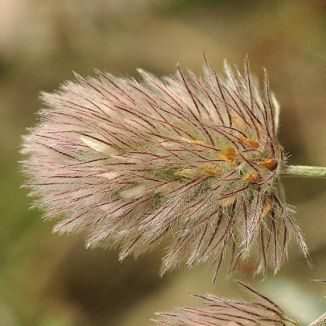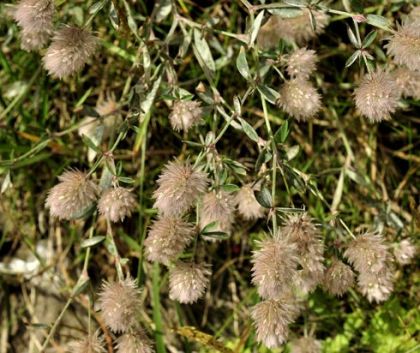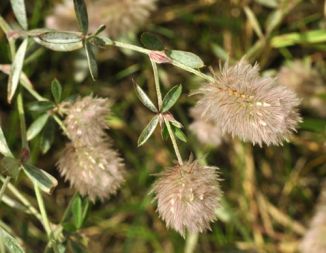Delicate, delightful, downy – this little annual member of the Pea family is a most attractive wildflower of dry, mostly coastal, sandy soils. Mainly found on the south and east coasts and also in some northern regions of Ireland, it flowers from June to September. Growing to no more than 25cm high, all of the plant is covered in soft hairs but it is the flowerheads which are its unique feature. These are dense, cylindrical, egg-shaped heads (2-3cm long) of tiny, pale pink flowers, each little flower surrounded by a long sepal tube which has fine, hairy teeth giving the flowerheads a soft, silky appearance. The flowerheads are stalked, some being axillary but most being terminal. The trefoil leaves have narrow, oval leaflets which are scarcely toothed. This is a native plant which belongs to the family Fabaceae.
In 1977, I discovered this little plant growing beside a footbridge over the railway track near Killiney, Co Dublin. However it vanished altogether from that site after the DART was installed on that line and the bridge modified in 1984. I was therefore delighted to find it again, this time on the North Bull Island in Co Dublin in 2009 and I photographed it there.
If you are satisfied you have correctly identified this plant, please submit your sighting to the National Biodiversity Data Centre




